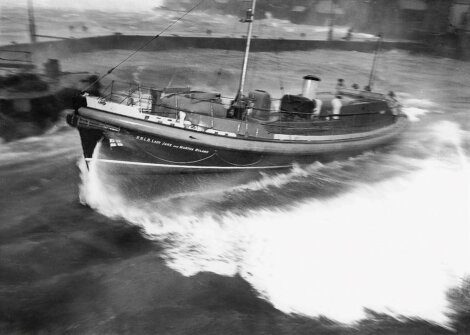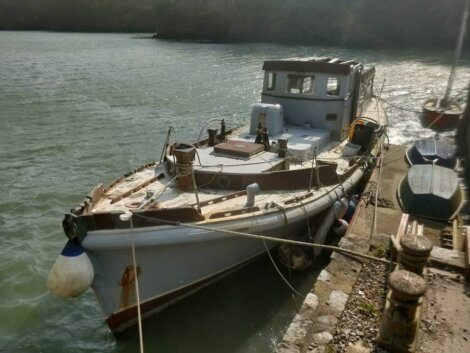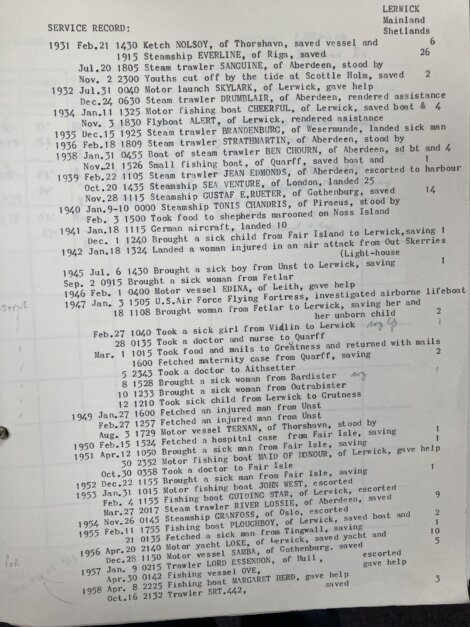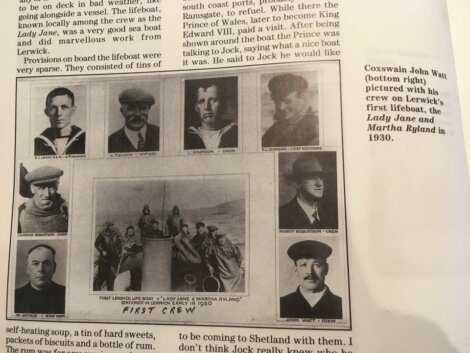Marine / Could Shetland’s first RNLI lifeboat return home?
SHETLAND’s historic first RNLI lifeboat is looking for a new home – and its owner is keen to see if anyone in the isles would be interested in taking her on.
The Lady Jane and Martha Ryland was brought to Lerwick in 1930 to give the RNLI its first presence in Shetland.
After going out of service, she ended up in Dartmouth at the other end of the UK.
She is currently owned by 30-year-old Charles Anderson, who bought the boat during lockdown with the aim of carrying out a restoration.
But with little time on his hands, he is now looking to see if anyone in Lerwick, or Shetland, would want to buy the former lifeboat to take her back ‘home’.
He wondered if she could act as some sort of museum piece if a full restoration is out of the question.
The Lady Jane and Martha Ryland was a 51ft ‘Barnett-class’ lifeboat formally presented in Lerwick by the Duke of Montrose, vice president of the RNLI, at an inaugural ceremony in 1932.
More than 2,000 people turned out in Lerwick to watch on.
With two 60-horsepower petrol engines, and a top-speed of just under nine knots, the Barnett-class was the most powerful RNLI lifeboat in production at the time.
The need for a lifeboat in Shetland was highlighted after fishing trawler Ben Doran foundered on Ve Skerries in March 1930 with the loss of nine lives, before the St Sunniva ferry ran aground on Mousa less than a fortnight later.
The Aith Lifeboat station was then launched on Shetland’s Westside in 1933.
The Lady Jane and Martha Ryland was replaced by the Claude Cecil Staniforth in 1958, and now the Lerwick station is on its fourth boat.
Become a member of Shetland News
Its service record shows a vast variety of shouts, from taking food to stranded shepherds in Noss and delivering mail to landing ten people from a German aircraft in 1941.
In addition to saving people at sea the lifeboat also helped bring people to medical care, echoing the job the coastguard helicopter carries out these days.
For instance, in 1947 she took a woman from Fetlar to Lerwick, saving her and her unborn child, while sick people were taken from places like Fair Isle, Unst and Vidlin.
Anderson, who has contacted Lerwick Community Council on the matter, said he has history in restoring boats – including a Dutch barge from 1910 which now acts as his home on the River Thames.
That restoration was featured on Channel 4 series My Floating Home.
Anderson described the former lifeboat as being in an “unloved state”, but it had been taken out of the water, the hull is in decent shape and he has carried out some work.
“It’s in a state at the minute which just needs a bit of work and a bit of love,” Anderson said.
“What would be absolutely amazing would be to be able to bring it back to Lerwick, where it was initially stationed.”
Anderson – who works in advertising in the London area – said the boat has undergone some minor modifications, particularly as she was used for leisure purposes in the 1970s.
“The whole thing is made from mahogany, and it’s got brass fittings everywhere,” he explained.
“It’s got quite a unique copper skinned engine room, and all the features in it are really fantastic.”
Anyone interested in the boat is asked to contact Charles at info@charles-anderson.com.
Become a member of Shetland News
Shetland News is asking its many readers to consider paying for membership to get additional features and services: -
- Remove non-local ads;
- Bookmark posts to read later;
- Exclusive curated weekly newsletter;
- Hide membership messages;
- Comments open for discussion.
If you appreciate what we do and feel strongly about impartial local journalism, then please become a member of Shetland News by either making a single payment, or setting up a monthly, quarterly or yearly subscription.
































































